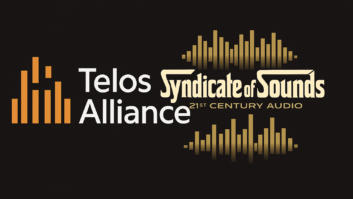
The Telos Alliance will be showing IBC audiences the latest versions of the Omnia.11 processor and 25-Seven Voltair watermark monitor and processor.
Version 3.0 for the .11 adds a parametric EQ, additions to the bass processing section, Day-Sequerra TimeLock compatibility and functionality with the Voltair processor. A release explained: “With 3.0, users can also select whether the HD processing is fed with the signal that goes through the patch point or not, allowing for separate PPM watermarking of HD/digital sides.”
The new version also offers Omnia’s new G-Force processing plug-in. Omnia calls G-Force an “architectural leap forward in regards to Omnia.11’s dynamics.” The G-Force platform was designed by Telos Alliance CEO/Omnia Founder Frank Foti and Senior Algorithm Developer Cornelius Gould. The optional Dynamics Engine plug-in for G-Force systems is also available for $985 for older models.
Also new is the optional Perfect Declipper Plug-In ($495), from Hans van Zutphen. The release described it: “the Perfect Declipper uses a revolutionary new algorithm to replace clipped areas in audio recordings, restoring dynamics and removing distortion.”
Voltair’s latest software is version 2.3.2. New are Encoder Distortion Testing and Display along with Flexible Program Output. The Encoder Distortion Testing and Display section is designed to let users know to what extent their PPM encoder is distorting the feed and if such distortion gets too high.
The Flexible Program Output adds throughputs and bypasses to the Voltair’s output feed. Therefore users can bypass Voltair processing when necessary without having to pull connectors and reroute audio. It also allows for a PPM encoding tones-only output.
The new upgrade also includes user manual additions for using the Voltair with Omnia.9 and Omnia.11 processors.
IBC Stand: 8.D47
Info: www.telosalliance.com







